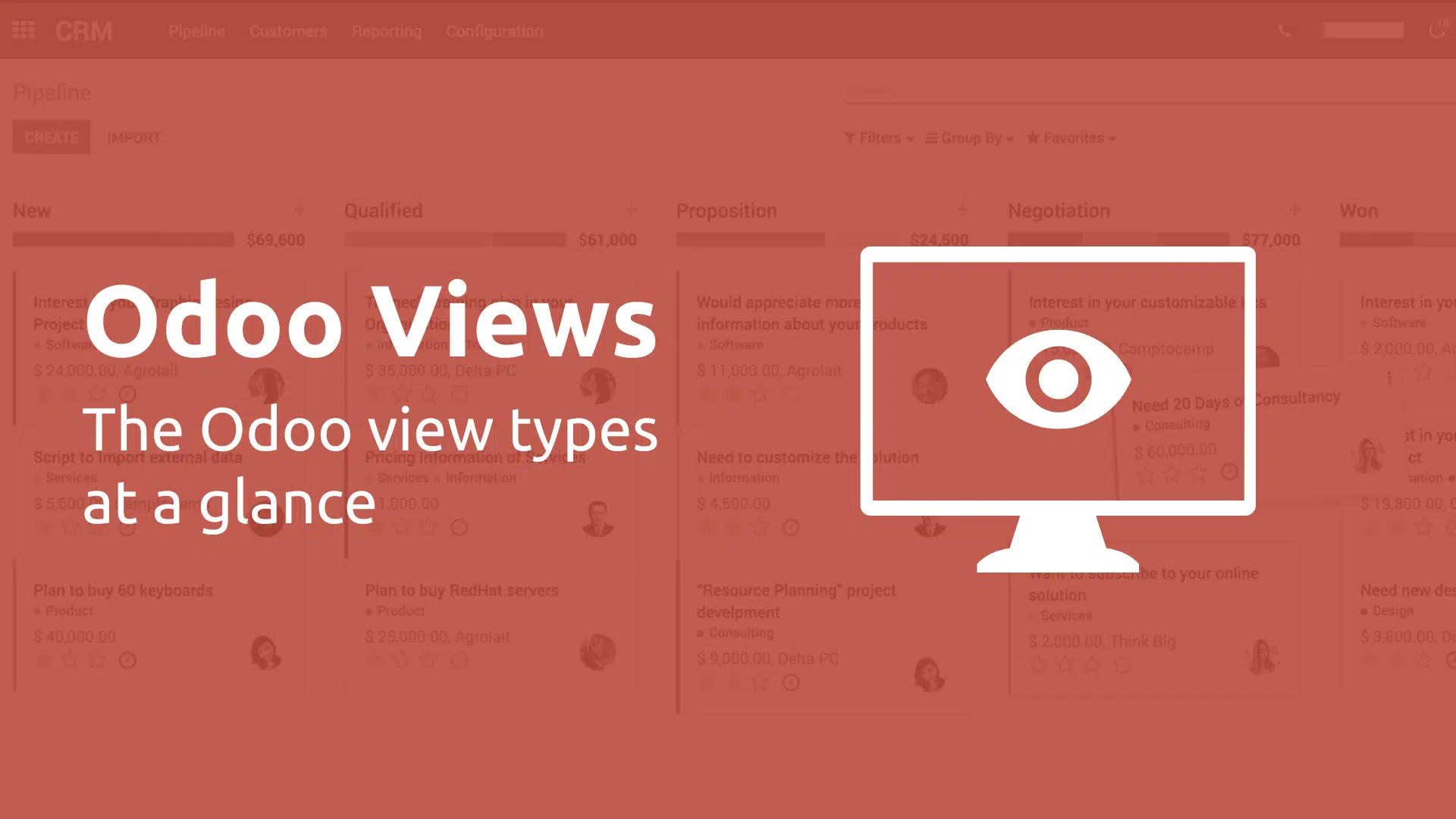Creating a beautiful and interactive dashboard in Odoo 18 involves several steps, as Odoo allows for extensive customization through modules, views, and custom development. Here’s a step-by-step guide on how to create a modern, interactive dashboard in Odoo 18:
Step 1: Set Up Your Development Environment
Before creating a custom dashboard, ensure your Odoo development environment is ready.
- Install Odoo 18 on your local machine or server.
- Enable Developer Mode in Odoo:
- Go to
Settings>Activate Developer Mode(or add?debug=1to the URL).
- Go to
- Create a Custom Module: This will help in adding the dashboard to your Odoo instance.
- In your Odoo installation folder, create a new directory for your custom module.
Step 2: Create the Custom Module
Create a custom module to contain the dashboard's functionality and views.
1.Create the Module Structure:
- Inside the
addonsfolder of your Odoo instance, create a directory for your module, e.g.,dashboard. - Inside the module directory, create the following structure:
dashboard/ __init__.py __manifest__.py static/ css style.css js dashboard.js xml dashboard_templates.xml views/ dashboard_views
2.Define the Manifest File (__manifest__.py): This file tells Odoo about the module’s name, dependencies, and other configurations.
{
'name': "Dashboard",
'version': '18.0.1.0.0',
'category': 'Extra Tools',
'summary': """Get a visual dashboard """,
'description': """Dashboard module brings a multipurpose graphical""",
'author': 'Odoo Team',
'depends': ['crm',],
'data': [
'views/dashboard_views.xml',
],
'assets': {
'web.assets_backend': [
'https://cdnjs.cloudflare.com/ajax/libs/Chart.js/4.4.0/chart.umd.min.js',
'dashboard/static/src/css/style.css',
'dashboard/static/src/js/dashboard.js',
'dashboard/static/src/xml/dashboard_templates.xml',
],
},
'license': 'AGPL-3',
'installable': True,
'application': False,
'auto_install': False,
}
Step 3: Design the Dashboard Template
In this step, you will define the HTML and the Odoo QWeb views for your dashboard.
1.Create the XML view for the dashboard (dashboard_template.xml):
<?xml version="1.0" encoding="utf-8"?>
<template>
<t t-name="OverallDashboard">
<div class="container-fluid" style="overflow: auto; max-height: 100%;">
<section class="dashboard_main_section" id="main_section_login">
<div class="row">
<div class="col-sm-12 mb-4">
<div class="row">
<div class="col-12 col-sm-12 col-md-8">
<h2 class="section-header mt-5 text-danger">Dashboard
</h2>
</div>
</div>
<hr/>
</div>
</div>
</section>
</div>
</t>
</template>
Step 4: Create the Python Models (Optional)
If you need to collect data or apply custom logic before rendering the dashboard, create models in Python. You can use the models folder for this.
Step 5: Add Menu Item and Action
To make the dashboard accessible, you need to add a menu item and an action that will open your custom dashboard.
Add the menu and action in your views folder (dashboard_menu.xml):
<?xml version="1.0" encoding="UTF-8" ?>
<odoo>
<record id="action_dashboard" model="ir.actions.client">
<field name="name">Dashboard</field>
<field name="tag">dashboard</field>
</record>
<menuitem id="dashboard_menu" name="Dashboard"
sequence="1"
action="action_dashboard"
/>
</odoo>Define JS Component to interact with the template and actions static\js\dashboard.js
/** @odoo-module **/
import {registry} from "@web/core/registry";
import {Component} from "@odoo/owl";
import {onWillStart, onMounted, useState, useRef, useEffect} from "@odoo/owl";
import {useService} from "@web/core/utils/hooks";
export class OverallDashboard extends Component {
}
OverallDashboard.template = 'OverallDashboard'
registry.category("actions").add("dashboard", OverallDashboard)Step 6: Install the Module
After completing the module development, you can install the module in Odoo.
- Go to the Odoo Apps menu and click on Update Apps List.
- Find your custom module (e.g., Custom Dashboard) and install it.
- You can see the dashboard in your UI (design in your template)
Learn More
1. setup Method and super.setup(...arguments);
What is setup()?
setup()is a lifecycle method in Owl components. It's the first function that runs when a component is being initialized. You use this method to set up any state, variables, or effects that the component will use during its lifetime.
What does super.setup(...arguments) mean?
super.setup(...arguments)is calling thesetupmethod from the parent class (Component). SinceOverallDashboardextendsComponentfrom the Owl library, callingsuper.setup()ensures that the component is correctly initialized with any necessary setup logic inherited from the parentComponentclass....argumentsis a JavaScript spread syntax that ensures all the arguments that were passed to thesetup()function are forwarded to the parent class’setup()method.
2. this.state = useState({})
What is useState()?
useState()is a reactivity hook provided by Owl. It is used to create reactive variables that will automatically update the UI when the state changes.- The code
this.state = useState({})initializes an empty state object. This state will hold the reactive data for the component. - Example use case:
- If you want to display a list of sales orders in your dashboard, you could store the list of orders in
this.state. When new sales orders are added, you can update the state and the UI will reflect the changes automatically.
- If you want to display a list of sales orders in your dashboard, you could store the list of orders in
3. onWillStart(async () => {})
What is onWillStart()?
onWillStart()is a lifecycle hook that is called before the component is mounted to the DOM (before it is displayed to the user).- It is often used to fetch data or perform other asynchronous actions before the component is rendered.
Why is it useful?
- You can use it to load data or prepare anything that the component needs before it’s fully rendered. For instance, if you want to fetch data from the server (e.g., a list of sales data or dashboard metrics), you can call an API or Odoo model method here.
- Example usecase:
onWillStart(async () => { const salesData = await this.env.services.rpc({ model: 'sale.order', method: 'search_read', args: [], kwargs: {}, }); this.state.salesData = salesData; // Storing data in state });
4. useEffect(() => {}, () => []);
What is useEffect()?
useEffect()is another lifecycle hook. It runs after the component is mounted to the DOM and is used for side-effects, like updating the DOM, fetching data, or subscribing to external events.- The empty array
[]passed as the second argument means the effect should run only once, when the component is first mounted (similar tocomponentDidMountin React).
Why is it used here?
- It’s useful for actions that need to happen after the component is rendered, such as subscribing to events or initializing libraries.
Example use case:
- You might use
useEffectto start a periodic refresh of the dashboard data after the component is loaded, or you might subscribe to certain events to listen for changes in data that the component depends on.
useEffect(() => {
const intervalId = setInterval(() => {
// Fetch updated data every 5 seconds
fetchData();
}, 5000);
return () => clearInterval(intervalId); // Clean up interval on unmount
}, []); // Empty dependency array ensures it runs once
5. registry.category("actions").add("dashboard", OverallDashboard)
- This line registers the
OverallDashboardcomponent in the Odoo registry. category("actions")is used to register the component as an action, and theadd("dashboard", OverallDashboard)binds this component to an action called"dashboard".- This allows you to associate the custom component with a particular action in Odoo. In this case, the action
"dashboard"will trigger the rendering ofOverallDashboard.
- State Management (
useState):- You would use
useState()to store data like total sales, average order value, and sales data for the graph. - This allows you to display dynamic data that will update automatically when the state changes (e.g., when new sales data is fetched).
- You would use
- Data Fetching (
onWillStart):- You might use
onWillStart()to fetch the data you need, such as the total sales for the month or sales over the last few weeks. - This ensures that the component is ready with the necessary data before it renders.
- You might use
- UI Effects (
useEffect):- After the component is mounted, you could use
useEffect()to initialize things like a chart or a periodic refresh of data. For example, you could set up an interval to automatically refresh sales data every 10 minutes.
- After the component is mounted, you could use
setup(): Initializes the component and sets up the state and lifecycle hooks.useState(): Creates a reactive state to hold data for the component.onWillStart(): Runs before the component is rendered to fetch or prepare data asynchronously.useEffect(): Runs after the component is mounted to handle side-effects like data polling or event subscriptions.registry.category("actions").add(): Registers the component as an action in Odoo so it can be triggered and rendered.
Owl is a modern JavaScript framework used by Odoo to manage UI components and frontend logic. It is based on reactivity (state-driven) and follows a component-based architecture.



